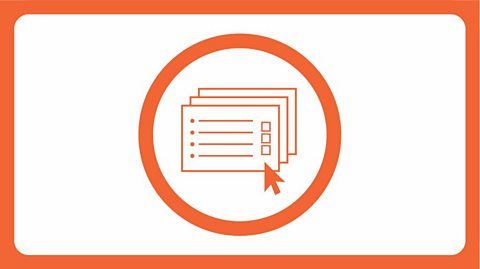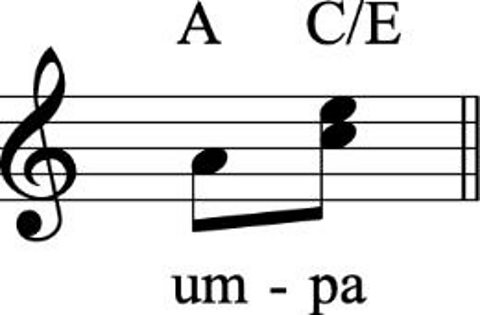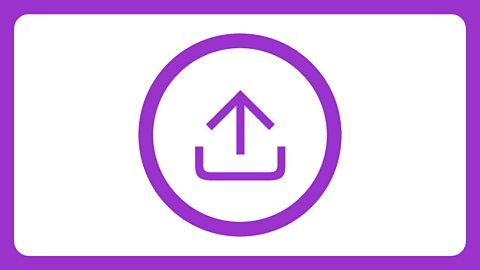91╚╚▒Č Teach](/teach) > Ten Pieces > KS2 resources > Florence Price
For:
- Key Stage 2 in England and Wales
- Second Level, P5-P7 in Scotland
- Key Stage 1/Key Stage 2 in Northern Ireland
You can also download the lesson plans as a PDF with accompanying powerpoint slides.
Written by Rachel Leach
Background
The composer: Florence PRICE (1887ÔÇô1953)
- African-American composer
- First black woman to have a composition played by a major American orchestra
- Wrote four symphonies (and many songs and chamber music)
Explore and download lesson plans for six weeks of learning and activities for Symphony No. 1 in E minor by Florence Price.

The music: Symphony No. 1 in E minor (3rd mvt)
- Her first large-scale orchestral work
- Written in 1931-32 and premiered by the Chicago Symphony Orchestra in 1933
- Third movement is called ÔÇśJuba DanceÔÇÖ
- Also known as the ÔÇśhamboneÔÇÖ, or ÔÇśpattinÔÇÖ jubaÔÇÖ, this dance was performed by slaves and featured music provided by their own body percussion
- The juba dance is the forerunner to tap dancing
Trailblazer: African-American composer Florence Price overcame much prejudice to become the first black female composer to have her work performed by a major orchestra.
Learning outcomes
Learners will:
- listen and reflect on a piece of orchestral music
- create their own piece of music using instruments and voice
- perform as an ensemble
- learn musical language appropriate to the task
Explore and download powerpoint slides for six weeks of learning and activities for Florence Price ÔÇô Symphony No. 1 in E minor (3rd mvt) by Florence Price.

Curriculum checklist:
- play and perform in ensemble contexts, using voices and playing musical instruments
- improvise and compose music for a range of purposes using the interrelated dimensions of music
- listen with attention to detail and recall sounds with increasing aural memory
Glossary of music terms used:
- Coda - a fancy, show-off ending
- Ostinato - a repeating (often rhythmic) pattern
- Pitched percussion - percussion instruments that can play different pitches ÔÇô xylophones, glockenspiels, chime bars, etc.
- Pulse - the steady ÔÇśbeatÔÇÖ under much music made up of notes of the same length (like a ticking clock)
- Rondo - (or Rondeau) a music shape with a recurring theme. The theme is alternated with contrasting ÔÇśepisodesÔÇÖ
- Unpitched percussion - percussion instruments that can only make a limited number of sounds ÔÇô drums, shakers, woodblocks, tambourines, etc.
Glossary terms can be found in bold throughout.
Resources required:
- classroom percussion instruments
- a large space such as the school hall
This scheme of work is plotted out over six lessons. Feel free to adapt it to suit your children and the resources you have available.
The six lessons at a glance
Lesson 1:
Activities:
- Watch the film
- Create movement inspired by the music
Curriculum link:
- Listen with attention to detail and recall sounds with increasing aural memory
- Appreciate and understand a wide range of high-quality live and recorded music drawn from different traditions and from great composers and musicians
- Develop an understanding of the history of music
Lesson 2:
Activities:
- Learn and invent body percussion ostinatos
Curriculum link:
- Listen with attention to detail and recall sounds with increasing aural memory
- Improvise and compose music for a range of purposes using the interrelated dimensions of music
- Play and perform in solo and ensemble contexts, using voices and playing musical instruments with increasing accuracy, fluency, control and expression
Lesson 3:
Activities:
- Learn to play an ÔÇśum-pahÔÇÖ pulse
Curriculum link:
- Listen with attention to detail and recall sounds with increasing aural memory
- Improvise and compose music for a range of purposes using the interrelated dimensions of music
- Play and perform in solo and ensemble contexts, using voices and playing musical instruments with increasing accuracy, fluency, control and expression
Lesson 4:
Activities:
- Create and play ostinatos.
- Transfer body percussion patterns onto instruments
Curriculum link:
- Listen with attention to detail and recall sounds with increasing aural memory
- Play and perform in solo and ensemble contexts, using voices and playing musical instruments with increasing accuracy, fluency, control and expression
- Improvise and compose music for a range of purposes using the interrelated dimensions of music
Lesson 5:
Activities:
- Structure ideas into a piece.
- Learn about rondo form and coda
- Create a rondo and coda
Curriculum link:
- Listen with attention to detail and recall sounds with increasing aural memory
- Play and perform in solo and ensemble contexts, using voices and playing musical instruments with increasing accuracy, fluency, control and expression
- Improvise and compose music for a range of purposes using the interrelated dimensions of music
Lesson 6:
Activities:
- Perform in a concert, teach and create a dance to go along with your music
Curriculum link:
- Play and perform in solo and ensemble contexts, using voices and playing musical instruments with increasing accuracy, fluency, control and expression
- Improvise and compose music for a range of purposes using the interrelated dimensions of music

LESSON 1 - Watching, listening and dancing!
- Prepare your class
Explain to your class that you are going to begin a six-week music project focusing on a fantastic piece of music by an African-American composer called Florence Price.
Tell your children that Price was a true trailblazer ÔÇô she was the first African-American woman to have a piece performed by a major American symphony orchestra.
Watch the Trailblazers film and have a discussion about it. This could tie in nicely with Black History Month or be the starting point for an exploration of slavery in America.
Watch the full orchestral performance and again have a discussion afterwards.
Talk about the instruments you have seen and in particular the percussion instruments. PriceÔÇÖs piece features some African drums that arenÔÇÖt often seen within the symphony orchestra and a sliding whistle known as a ÔÇśswaneeÔÇÖ ÔÇô did your children spot them? Perhaps you have similar instruments in school.
Naomi Wilkinson explores the West African rhythms of Florence PriceÔÇÖs Symphony No. 1. Price combines these rhythms with the sound of spirituals and traditional classical music.
- Listening/movement task
Move into a large space such as the school hall, or if working in the classroom then clear all of the furniture to the sides so that your children can stand in a circle. Explain that PriceÔÇÖs music is inspired by the ÔÇśjuba danceÔÇÖ. The dancers would stand in a circle with everyone facing the same way. Ask your children to organise themselves so that everyone faces the back of the person next to them and therefore if they were to walk forwards they would all move in the same direction.
Encourage your children to walk forwards creating a steady beat with their feet and staying in the circle shape (i.e. everyone is simply following the person in front of them). Move in a clockwise direction.
When this is achieved, ask the class to quickly turn and then try walking in the other direction (anti-clockwise). Practise moving 15 steps in one direction, turn quickly on the 16th beat and then move 15 steps in the other direction before turning back again on the 16th beat. It may help to tap a drum during this to keep time and, while practising encourage the class to count out loud. Alternate your walking like this a few times until everyone has got the hang of it.
Next, ask the class to slap their thighs in between each step. To be really authentic they should try slapping the thigh of the leg that has just stepped forward and use an upward motion. So, step the left leg forward, slap the back of that leg by moving the left arm upwards. Try this using the same counting method as above. (i.e. walk for 15 steps, turn on 16, repeat).
FINALLY, try performing these moves along to PriceÔÇÖs music. They should fit perfectly but as the track is quite long, you may want to stop the walking from time to time and have 16 beats of freestyle dancing ÔÇô perhaps a soloist can dance in the middle of the circle. To make these changes simply call out ÔÇśfreestyleÔÇÖ and ÔÇśjuba jubaÔÇÖ when you want them to walk again. You could even choose a child to do this job for you.
Watch the full performance of PriceÔÇÖs piece by the 91╚╚▒Č Scottish Symphony Orchestra, conducted by Roderick Cox.

LESSON 2 - ÔÇśpattinÔÇÖ jubaÔÇÖ
- Warm-up
Perform your dance to PriceÔÇÖs music.
- Explain
During a traditional juba dance, often all of the music would be created by the dancers performing rhythms on their bodies. They did this because they didnÔÇÖt have any instruments. Today we call this ÔÇśbody percussionÔÇÖ but back when this dance became popular, around 1845, it was known as ÔÇśpattinÔÇÖ jubaÔÇÖ.
- Florence PriceÔÇÖs symphony features many of these body percussion rhythms within the orchestral parts. Split your circle into four groups and teach each group one of the following patterns. A repeating pattern is also called an ostinato. The words below will help with the rhythms:

- Challenge each team to come up with a way of performing their rhythm using more of their bodies than just clapping. Give each group a little time to practise and challenge them to repeat their pattern eight times and then stop.
If these rhythms are proving tricky, please simplify them or encourage the children to invent their own.
Bring the class back together and hear each ostinato. Ask the rest of the class to listen carefully and give some feedback ÔÇô did they manage to do just eight repetitions? Were the rhythms neat?
Practise the walking circle again and then ask the children to try and perform this structure:
- Walking circle ÔÇô 15 steps, turn, 15 steps, turn
- Group 1 ÔÇô eight times
- Walking circle ÔÇô 15 steps, turn, 15 steps, turn
- Group 2 ÔÇô eight times
- Walking circle ÔÇô 15 steps, turn, 15 steps, turn
- Group 3 ÔÇô eight times
- Walking circle ÔÇô 15 steps, turn, 15 steps, turn
- Group 4 ÔÇô eight times
They can decide the order of the groups.
- Explain
This is very similar to the musical shape that Price uses. It is called rondo and features an idea that keeps returning (i.e. the walking circle).
- Coda
Price adds a fancy ending onto her piece called a coda. Ask your children to think of a way to end their dance. Encourage them to use ideas they have already worked on rather than try something new ÔÇô all the groups together perhaps, or a freestyle moment?
- FINALLY, add this on to the end of your structure and try performing the dance along with PriceÔÇÖs music. YouÔÇÖll probably notice that Price actually changes the ÔÇśneatnessÔÇÖ of her piece by slowing down slightly in the middle. You can either ignore this or wait and pick up again afterwards.
Obviously there is no recorded evidence of juba dancing but it probably wasnÔÇÖt a quiet, sedate affair! The performers and audience probably joined in with whoops and cries of ÔÇśjuba jubaÔÇÖ ÔÇô encourage your performers to do the same.If you feel uneasy about recreating a slave dance, hereÔÇÖs a useful fact: It is now thought that the body rhythms contained coded messages and the dance was actually a way of the slaves communicating without their plantation owners understanding, so it was actually a form of rebellion and empowerment. Also, without juba dancing we probably wouldnÔÇÖt have modern tap dancing or even street dance.

LESSON 3 - ÔÇśWalkingÔÇÖ juba
- Warm-up
Start with your class sitting in a circle and perform the body percussion rhythms you worked on during the last lesson.
- Explain
The walking/thigh slapping rhythm you have all been using (the walking circle) is actually the pulse that keeps the music together. It is known as an ÔÇśum-pahÔÇÖ pulse because of the strong ÔÇśumÔÇÖ sound (made by the feet) and the weaker ÔÇśpahÔÇÖ sound (made by the thigh slap).
Ask the class to choose two unpitched instruments to play this rhythm ÔÇô one ÔÇśstrongÔÇÖ and one ÔÇśweakÔÇÖ. Try out several suggestions until you have the perfect combination and choose two children to play it, again 16 times. A fun way to count the 16 is by saying ÔÇś1-pah, 2-pahÔÇÖ, etc.
Pitched percussion
Price uses these notes for her ÔÇśum-pahÔÇÖ at the beginning of the piece:

Choose someone to have a go at this. You can even share it between two players.
Try putting a class version of this um-pah together using pitched and unpitched instruments. Perform 16 ÔÇśum-pahsÔÇÖ only and then stop.
FINALLY, remind your children of the walking circle. It should fit with this ÔÇśum-pahÔÇÖ pulse. Remind the class that they travelled in alternating directions. To emulate this on instruments, split the class into two halves and alternate back and forth between the groups, 16 um-pahs one way and then 16 ÔÇśum-pahsÔÇÖ back. Call this your ÔÇśwalking jubaÔÇÖ section.

LESSON 4 - ÔÇśTeamÔÇÖ juba
- Warm-up
Recap the ÔÇśum-pahÔÇÖ pulse from the last lesson and, quickly splitting back into groups, the body percussion rhythms from lesson 2.
Get the instruments out and put the ÔÇśwalking jubaÔÇÖ section back together ensuring that everyone has the same instruments as last time.
Remind your children of the shape of PriceÔÇÖs piece. It was a rondo ÔÇô a shape with one idea that keeps returning. Explain that your ÔÇśwalking jubaÔÇÖ is the section that will keep returning, now you need to make the ÔÇśepisodesÔÇÖ that go in between.
Split back into the groups you were in during lesson 2 and again make sure that everyone sticks to the same instrument they have been playing so far and doesnÔÇÖt swap! The task is to move the body percussion rhythms onto instruments. If using pitches each group must stick to the white pitches only. As before, they must make just eight repetitions of the rhythm and then stop together neatly.
When this is achieved, bring the class back together and hear each team one by one. Encourage the rest of the class to give feedback and check that everyoneÔÇÖs piece is the perfect length (eight repetitions), starting and stopping together neatly.
FINALLY, end this lesson by encouraging each team to carefully write down what they have done and who played what.

LESSON 5 - Rondo and Coda
- Warm-up
Begin in a large circle with a quick focusing activity and recap, without instruments, the ÔÇśum-pahÔÇÖ pulse and all of the rhythms you have worked with so far.
- Remind your class of the RONDO shape again and to help them understand it, play this quick game:
- Ask one of your class to suggest a gesture or a sound. Ask the rest of the class to copy it (whatever it is)
- Ask three more children and copy each time
- Discuss which is your favourite gesture and label it A. Label the other three B, C, and D (each one includes the solo gesture and then everyone copying)
- Make the following structure out of your solos and copied ideas (whatever they are):
A ÔÇô B ÔÇô A ÔÇô C ÔÇô A - D - A
This is the shape that Price uses in her symphony and the shape of the ÔÇśpattinÔÇÖ jubaÔÇÖ you made in lesson 2.
- Make a list on the board of what you have created so far. It should look something like this:
- Walking juba ÔÇô everyone performing in two halves (16 beats then 16 beats). ÔÇśUm-pahÔÇÖ notes are A, C/E
- Four team juba pieces (eight patterns each). White notes
Split back into groups and ask each group to get out their instruments and put their music back together. When the groups are sorted, put the bigger ÔÇśwalking jubaÔÇÖ section back together with everyone.
Challenge your children to structure their sections into rondo form. The ÔÇśwalking jubaÔÇÖ section will keep returning but the class must decide on the order of the ÔÇśepisodesÔÇÖ in between (the ÔÇśteam jubasÔÇÖ). Try out several versions until you have the best one.
Practise your order until it is neat and you can move from section to section without a break.
Coda
Remind your children of the end of PriceÔÇÖs piece ÔÇô the CODA. The children made a coda to their ÔÇśpattinÔÇÖ jubaÔÇÖ in lesson 2. Perhaps they layered everything up? Perhaps it was freestyle? Challenge them to create a coda (fancy ending) using their instruments and again, aim for this to be a quick and easy task ÔÇô no time for new ideas or swapping instruments!
- FINALLY, end the session by performing your whole piece and write down carefully what you have done.

LESSON 6 - Performance time!
- Warm up
Sit the children in a circle and recap using just voices and body percussion all the elements you have created so far. Talk through your structure too.
Get the instruments out and split back into groups. Give the class just five minutes to remember their ideas and put their group sections back together.
Try performing the whole Rondo and Coda structure just like you did at the end of the last lesson. Take some time here to rehearse and make your piece as neat and as musical as possible.
Taking a break from the instruments, and using the recording of PriceÔÇÖs piece, put the dance back together from lesson 1.
Invite a class in to hear your music and watch your dance. Tell them all about Florence Price and her music.
FINALLY teach the audience (or encourage your children to teach the audience), the walking circle part of your dance and perform your music again with some of the audience dancing along. If you have enough space the audience can dance in a big circle around the ÔÇśbandÔÇÖ. In the group sections they may freestyle or clap along.

TAKING IT FURTHER - Cross-curricular activities
MUSIC: Florence Price wrote four symphonies. In each one, the third movement is a ÔÇśjuba danceÔÇÖ. Her tastes and skills increased the more she wrote so these juba dances are very different to each other. Compare and contrast them, which is the best and which one are you going to dance to next?
RESEARCH: The juba dance developed into tap dancing largely because of a very famous African-American dancer called ÔÇśMaster JubaÔÇÖ. Tap dancing then grew into street dancing. Research Master JubaÔÇÖs story and the history of these dance styles or have a go at tap dancing!
LITERACY: Florence was from a wealthy African-American family but she grew up in very difficult times when the American South was segregated and there were strict laws for how black people should behave. This affected her everyday life; she would have been banned from ÔÇśwhites onlyÔÇÖ places and unable to travel around freely. Imagine how that must have felt and write a letter in her voice.
UPLOAD: Show us what youÔÇÖve created! Submit your creative responses using our Uploader for a chance to be featured on the Ten Pieces website.
Upload and showcase your creative responses
Upload your creative responses to the Ten Pieces repertoire for your chance to feature in the Ten Pieces creative showcase.
